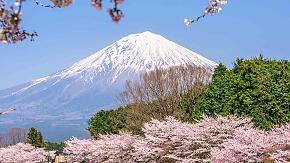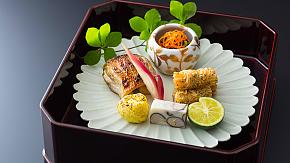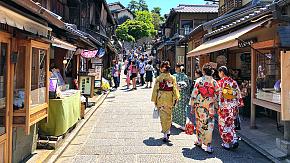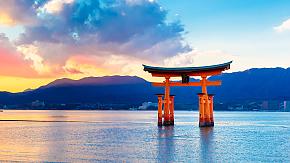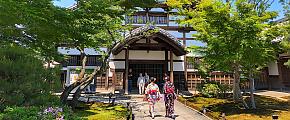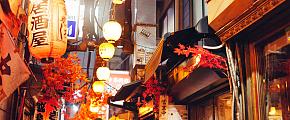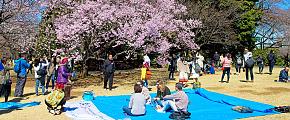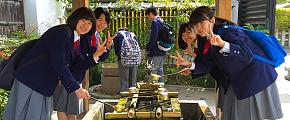Top Tourist Attractions in Japan
To say that Japan is mysterious would be an understatement. It's a seamless blend of millennia of customs and ultra-modern machinery, which makes Japan a fantastic holiday destination.
Notwithstanding conflicts and environmental disasters, the most essential of this strong culture has been kept, making a trip to Japan an unforgettable experience with many exciting activities, historic sites, and other must-see sights. Below is the list of the top tourist attractions you should not miss.
- Mt. Fuji, the Symbol of Japan
- Fushimi Inari Taisha, Thousand of Torii Gates
- Shinjuku Gyoen, Popular Sakura Viewing Spot
- Itsukushima Jinja, Floating Shrine & Torii
- Dotonburi, Local Delicacy & Nightlife
- Nara Park, Roaming Deer With Temples
- Snow Monkey Park, Monkey in Hot Springs
- Shirakawago, Historical Village Sites
- Niseko United, Powder Snow & Winter Fun
- Miyakojima, Sandy Beach Island in Okinawa
Mt. Fuji, the Symbol of Japan
About a 1.5-hour drive from Tokyo, Mt. Fuji is a popular tourist site to visit in Japan. From the cozy mountain foot camping around Lake Kawaguchi to the summertime pilgrims up to the legendary peak rising to an impressive 3,776 meters, there is always much to do around Mt. Fuji, the most famous symbol of Japan.
Never miss the Momiji Corridor during your autumn sightseeing when the majestic mountain is perfectly framed by vibrant autumn leaves, or take a leisurely boat ride on the central lake, which mirrors the lovely snow-capped mountain.
Fushimi Inari Taisha, Thousand of Torii Gates
Fushimi Inari-Taisha in Kyoto is a significant Shinto shrine, embodying Japan's unique religion centered on the worship of ancestors and numerous spirits, or "kami." Dedicated to the kami of rice, agriculture, and business, the shrine's pathways are lined with thousands of torii gates, generously donated by businesspeople as offerings.
After exploring the main shrine at the mountain's base, follow the iconic vermilion torii tunnel that leads to the inner building. These gates symbolize the transition between our world and a more spiritual realm, offering a journey rich with meaning and serenity.
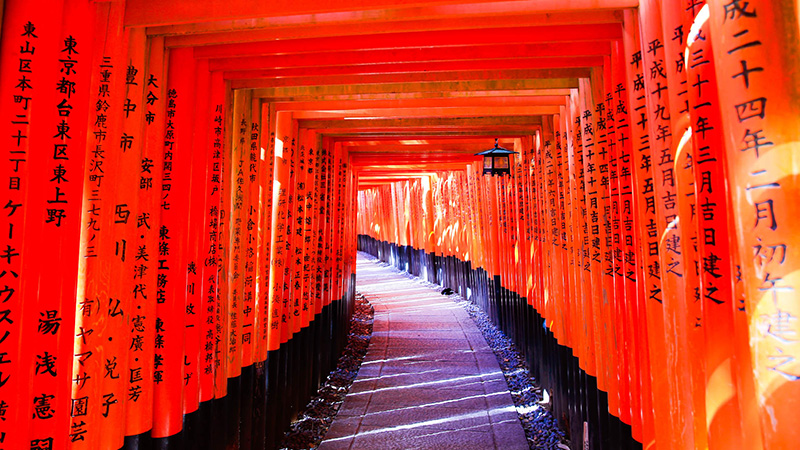 Torii Gates at Fushimi Inari Taisha, Kyoto
Torii Gates at Fushimi Inari Taisha, Kyoto
Shinjuku Gyoen, Popular Sakura Viewing Spot
Shinjuku Gyoen is one of the best sites to see in Japan, Tokyo, especially during your relaxing spring break from February to May, an ideal time to capture those various cherry blossom species, from the pale-pink somei-yoshino to the vibrant, multi-layered yaezakura.
Stroll through the Japanese and French-style gardens at your leisure, cross the lake where your reflection dances on the water beneath a wooden bridge, or enjoy a picnic under the blooming sakura trees to fully embrace the serene atmosphere of spring.
Itsukushima Jinja, Floating Shrine & Torii
Itsukushima Jinja is a unique shrine seemingly built upon the water, skillfully designed to harmonize architecture with nature. This creates the enchanting illusion of a palace floating on the sea, as both the torii gate and shrine appear to drift on the water during high tide.
Spend half a day or more in Hiroshima to witness this breathtaking tourist sight, especially during sunrise or sunset when the shrine is bathed in stunning hues. Visiting during low tide is equally rewarding, as it allows you to walk closer to the grand torii gate and admire its impressive structure up close.
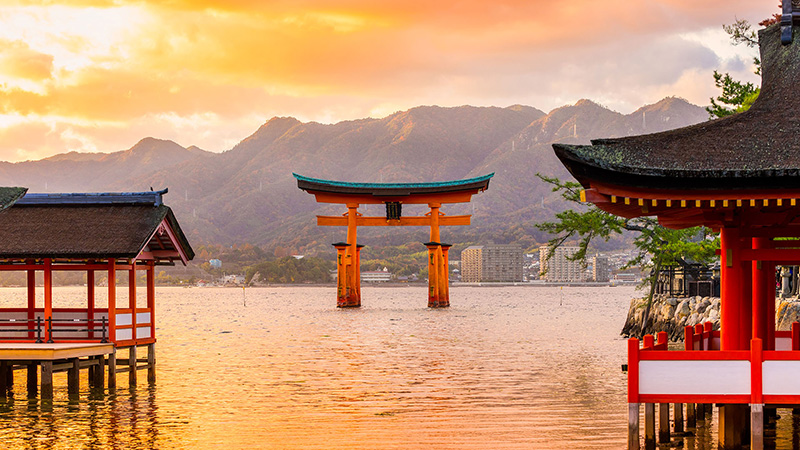 Itsukushima Shrine, Hiroshima
Itsukushima Shrine, Hiroshima
Dotonburi, Local Delicacy & Nightlife
When choosing the tourist attraction that best represents Osaka, Dotonbori stands out with its vibrant and cozy atmosphere. Lines a tranquil canal, this bustling street is often considered the heart of Osaka, which is best to visit in the afternoon when the stalls and neon lights start coming to life for their evening displays.
Enjoy a leisurely river cruise, with the water reflecting the sunlight and colorful neon signs, or hopping for stalls for a street food adventure. Whether before or after dinner, the tempting aromas wafting through the air are sure to make your mouth water.
Nara Park, Roaming Deer With Temples
Another iconic Japanese tourist attraction not to be missed is Nara Park, where friendly deer roam freely, creating delightful and unexpected encounters around every corner, conveniently accessible from both Kyoto and Osaka.
The highlight of your visit? Bring some small cash or coins to purchase deer crackers from staff or vending machines, and enjoy the playful warmth of these charming animals. Hide the treats well, or simply savor the joy of feeding them. Don't forget to include a visit to the temples within the park, where the deer, known as messengers of the gods, will even bow back to you if you bow to them first!
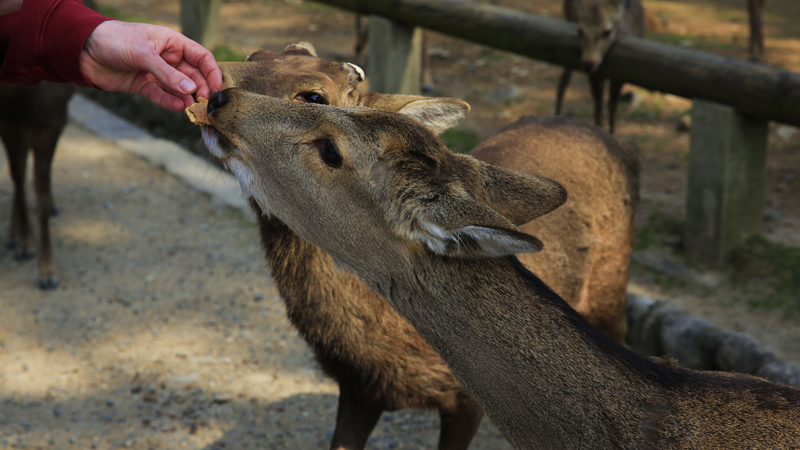 Deer in Nara Park
Deer in Nara Park
Snow Monkey Park, Monkey in Hot Springs
If you've ever admired photos of furry monkeys soaking in hot springs with their reddish faces, the Snow Monkey Park in the mountainous Nagano region should be on your list of must-visit tourist sites in Japan.
The park offers a year-round opportunity to encounter these adorable creatures. In spring, you can witness the playful antics of baby monkeys during their feeding season. Autumn brings a lively atmosphere as the monkeys engage in foraging and hunting. However, to capture their iconic relaxing baths, winter remains the best time to visit.
Shirakawago, Historical Village Sites
The serene village of Shirakawago offers a glimpse into another side of Japan - traditional triangular thatched-roof houses nestled at the foot of the mountains. Scattered among lush paddy fields, connected by tiny winding paths. In winter, the village transforms into a fairytale-like world, blanketed in snow and illuminated with the warm glow of candlelight.
Shirakawago is the perfect tourist attraction to slow down and escape the bustle of city life. Enjoy a warm cup of sake by the bonfire, or take a leisurely stroll along the flower-lined paths for an adventure with a playful puppy by your side.
 Shirakawago, Gifu
Shirakawago, Gifu
Niseko United, Powder Snow & Winter Fun
Niseko United, one of the top tourist sites in Japan for every winter holiday, this ski resort is a natural paradise for endless winter fun in Hokkaido, renowned for its exceptional "Japow" (Japan powder snow).
With its surprisingly dry and light powdery snow, combined with highly praised ski-in and ski-out facilities, Niseko offers the ultimate skiing experience. Glide down long slopes framed by stunning mountain views, weave through tree-lined trails dusted with sparkling powder, and end your day by soaking in the warmth of the hotel's relaxing hot springs.
Miyakojima, Sandy Beach Island in Okinawa
For beach lovers, the tropical paradise of Miyakojima is a must-visit destination, boasting some of Japan's finest sandy beaches and breathtaking coral reefs - perfect for an immersive beach holiday filled with swimming and snorkeling.
Relax on pristine shores while gazing at the endless blue sea, savoring salt-flavored cocktails, fresh mango desserts, and melt-in-your-mouth Miyako beef. Feel the gentle waves caress your skin and toes as you wade in the shallows, or take your adventure to the next level by diving into underwater caves to explore a mesmerizing aquatic world.
Unwind the Top Tourist Attractions in Japan
If you're planning to travel to Japan and want to explore its unique charm with your own eyes, please don't hesitate to contact us, no matter the top tourist attractions or sample itineraries for more inspiration, just simply tell us your interests and needs, and one of our travel experts will create a tailor-made itinerary for you.
What Our Clients Say
Explore the latest verified reviews of Odynovo's travel services on Tripadvisor, Google, Trustpilot, Product Review and more trusted platforms.

